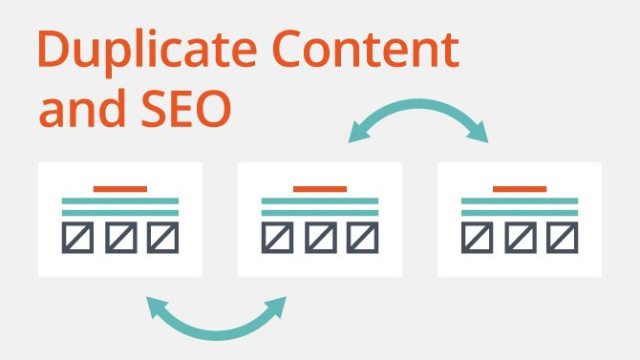
In this article, we want to explain the close relationship that exists between content creation and search engine positioning, but this time we want to approach it from a different point of view. So let’s tell you how duplicate content can negatively affect your web positioning and your online reputation.
What is the duplicate content?
To begin we will give you an approximation of the concept: we say that there is duplicate content when we have two blocks of texts that are equal (or very similar) in two different urls. These identical contents can be either static pages or articles or dynamic pages of a blog.
When you are going to generate content for your readers, you always have to think about creating fresh, new, relevant content that is useful to them. This is something that Google values positively and will gradually reward you, making you climb positions in your SERP or result pages.
Let’s see how duplicate content can appear not only on other websites but also on our own site.
On our own website
There are several cases that can occur, but the most common are when there are two urls that work the same, for example www.dominio.com and dominio.com. In both cases the website shown is the same, but by having two different urls Google can understand that it is duplicate content.
This can be solved by choosing a preferred domain and performing a redirect 301 as indicated in webmaster tools.
Another situation in which we can find content duplicity is with the labels or categories of a blog, since a post can be displayed both in the blog’s homepage and in the files or labels page.
In this case we also have a solution since there are SEO plugins in WordPress, such as Yoast, which allows, among many other things, to easily solve this duplicity.
On third party websites
There is a technique called scraping, which consists of a software that automatically copies and pastes the content of one website into another.
On the other hand is the plagiarism of all life through “crtl + c” and “ctrl + v”, for example.
What can be the negative consequences for us?
A first negative effect that plagiarism or scraping can have for you is what is called hotlinking. This term is nothing else than when an image of a web is copied, instead of duplicating the image, what is done is an absolute link to the image.
In this way, the copied web is making its own server available to the copier, that is, in addition to the content it is spending its bandwidth.
To avoid this effect, WordPress again offers a splendid plugin that can help avoid the hotlink.
Position yourself ahead of the original. Google does not care much about the date of publication of an article, so if the web copy has more authority than the copied, it can get to position itself ahead even with duplicate content.
Finally, as we said before, Google does not like duplicate content, so if you think that we are the ones we copied, then you can punish us. While it is true that there is a penalty in the strict sense what can happen is that it does not index the original content, which is enough punishment.
How to detect duplicate content?
We have three options to detect identical content. On the one hand we have plagiarism checker, which allows us to check a specific text block or a complete url. It has free version and payment.
Our favorite option is Copyscape, despite its simple appearance, it is a very powerful tool in which we can enter a url and return urls from other websites that contain the same content.
Finally, we always have Google. If we introduce a block of text in quotes in the search box, and there is another block of text on the web that is the same, it will return it to us as search results.
Solutions to copied content
Keep in mind is that all content that is uploaded to the Internet is likely to be replicated and copied. This is not bad, always cite the source.
The first solution is to send an educated email to the website you have copied, requesting that they quote the source or, if appropriate, remove the content in question. If you opt for this option, do not be surprised if you receive several expletives.
Make use of the Authorship. It is about attributing a content to a person, in which case the image of the author appears next to the search results.
To finish we would have the complaint to Google using a simple form. After the arrival of the Penguin, an algorithm that punishes duplicate content, Google intends to hunt down and capture those spam websites that are dedicated to copying content from others, which is why this means of reporting facilitates us.
With this article we hope to have detailed the consequences of replicating content and highlighting the importance of creating your content in an original way. If you need to know more about content marketing, we invite you to visit this page.
About Author:
Yousuf A. Raza is a professional SEO expert that provides local SEO services at Local SEO Blast to their clients. The firm is providing result oriented SEO services across the world in very reasonable price.
